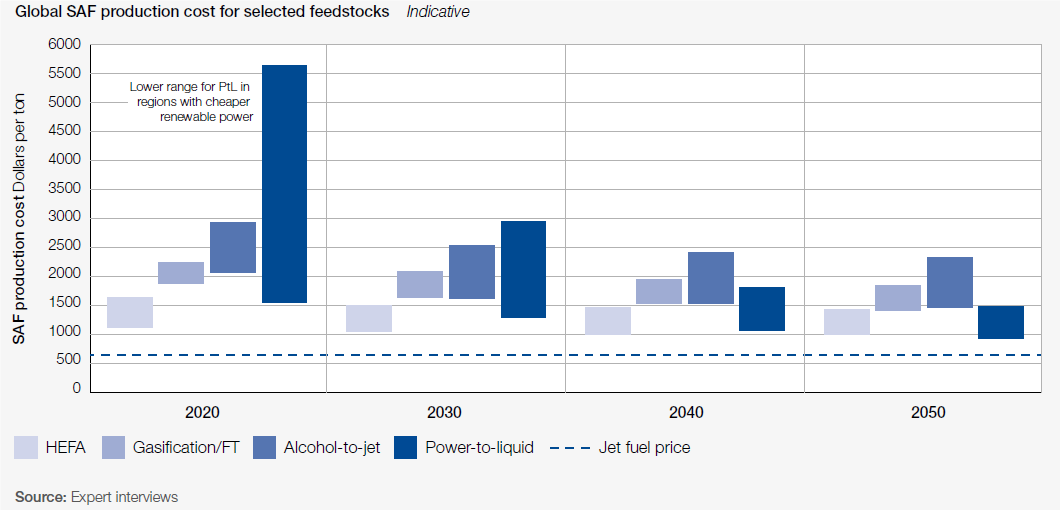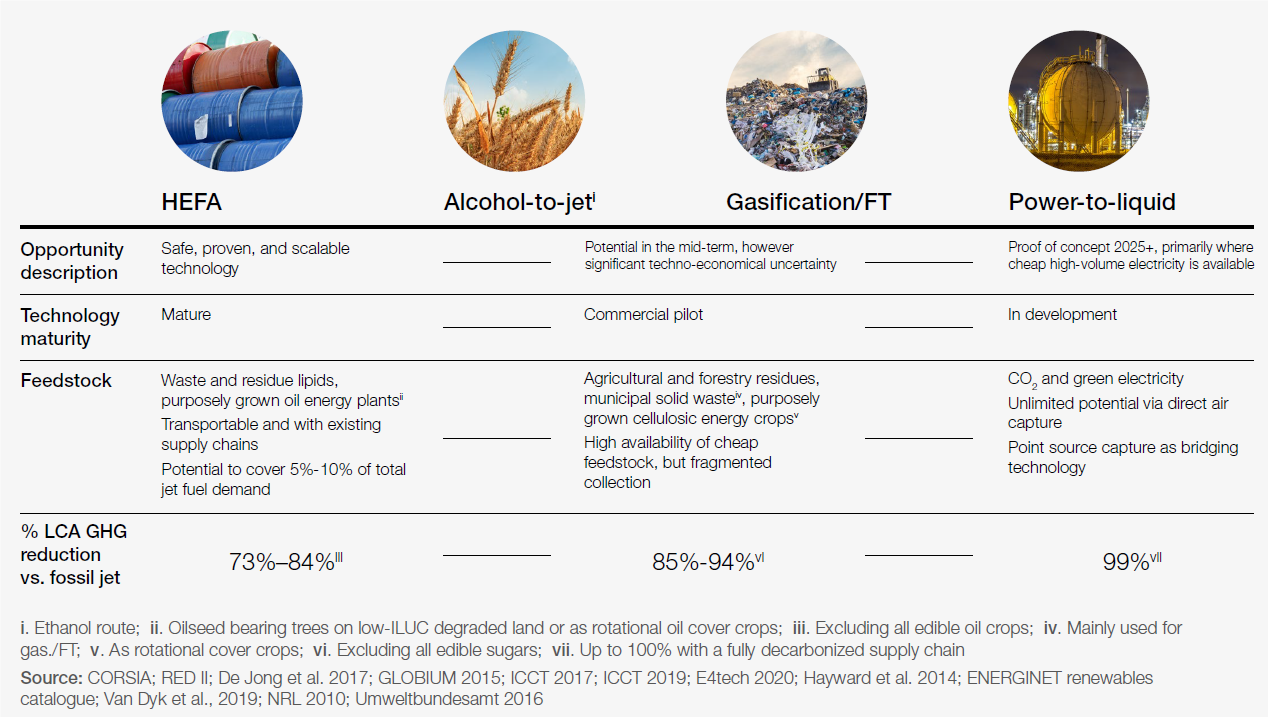Leeham News and Analysis
There's more to real news than a news release.
Bjorn’s Corner: Sustainable Air Transport. Part 55. Sustainable Aviation Fuel feedstocks
January 27, 2023, ©. Leeham News: Last week, we learned the main pathways to Sustainable Aviation Fuel and their production volumes for the next years.
Now we look at the feedstocks, what output we get from these, and how to safeguard the pathway is ethical and sustainable. Finally, we look at the cost of SAF until 2050.
Sustainable Aviation Fuel
To understand SAF, we use Clean Skies for Tomorrow’s report: Sustainable Aviation Fuels as a Pathway to Net-Zero Aviation. It explains the main pathways (Figure 1) to SAF:
HEFA: Hydroprocessed Esters and Fatty Acids. It’s the classical oils and fats SAF. It’s over 95% of today’s SAF and will stay above 80% by 2030, according to experts.
The Alcohol-to-jet pathway can convert biomass to ethanol into aviation fuel. It widens the biomass types we can use.
Gasification+Fisher Tropsch is the biomass but, more importantly, the waste-based pathway. It has little importance until 2030 but has high long-term potential.
Power to Liquid or e-fuel is a long-term source, but we must have cheap energy that can’t easily be routed to consumers to motivate this pathway.
It’s important to understand these pathways produce SAF at different conversion rates (yields), and the output has different slates (fractions) that can be used for SAF, Figure 2. Other outputs are road fuels like biodiesel and chemical products like naphtha, called “Light ends” in the figure.

Figure 2. The yield of different products from the pathways. Source: Clean Skies for Tomorrow report.
You can tune the processes to produce more or less SAF, but it can affect the yield of the process. Note the low yields (amount of feedstock to output) for all pathways except HEFA.
Sustainable Aviation Fuel feedstocks
It’s important that the pathway used in producing SAF and biodiesel is a sustainable pathway end to end. It means, for instance, that the feedstock shall not threaten the food supply and not cause indirect land-use changes.
Figure 3 shows different feedstock types and how these contribute to GreenHouseGas (GHG) savings and if they are sensitive to non-ethical use.

Figure 3. The feedstock types and their GreenHouseGas, GHG saving potential, and whether there can be ethical issues with the feedstock. Source: Clean Skies for Tomorrow report.
We see that the most efficient pathway, HEFA, also has the most potential for non-ethical use of the feedstock. There is scrutiny from several organizations that we are not jumping from Jet fuel to another unsustainable energy supply. ICAO, the Environmental Defence Fund, and other organizations are watching the road to SAF to ensure that it follows high-integrity pathways.
SAF production cost
The current production of hydrocarbon fuels has a pathway where we pay nothing for the production of the raw hydrocarbon (the crude). We pump it from reservoirs where it has matured over the last million years and combust it to release its energy content (some is also used for non-combustion use).
The process of releasing carbon now, when it was captured millions of years ago, causes an imbalanced energy system and, thus, our GHG problems.
It’s logical that if we now create circular and sustainable pathways, it carries a higher cost. For the present Jet fuel use, we only pay for the final part of the pathway.
Figure 4 shows the expected development of the production cost of the SAF circular pathways compared with our “dig-up and use” Jet fuel production.

Figure 4. The expected cost of the SAF pathways compared with Jet fuel production. Source: Clean Skies for Tomorrow report.
We see the HEFA pathway will be the lowest cost among the SAFs until 2050, when e-fuel should catch up. SAF will be costlier to produce than Jef fuel throughout the period. As discussed, this is logical; we pay the full cost of SAF, not Jet fuel.
In the next Corner, we discuss the non-Carbon effects of SAF.




“For the present Jet fuel use, we only pay for the final part of the pathway.”
Actually, if you factor in the costs of industrial carbon capture and storage for fossil fuels — which we’re currently not paying, but are nevertheless accumulating as “accounts payable” — then the costs of SAF and Jet A become more comparable. The only difference is then the timing at which the costs are incurred — before (SAF) or after (Jet A) combustion.
It is not entirely true that “we only pay for the final part of the pathway”. Some of the significant cost to oil and gas producers include cost to discover new oil fields, cost to develop those oil fields, cost to transport the oil from often remote locations to market, royalties paid to landholders (often government) and carbon taxes in those jurisdictions where they are imposed. As readily available pools get depleted, these costs will rise, particularly at the margin where pricing is established. These costs would be lower or non-existent in the case of SAF.
On the other hand, oil production is much farther down the learning curve and is produced at vast scale so they have optimised many of these costs (other than taxes/royalties) whereas SAF is still getting started.
Bjorn – This is an excellent article. Thanks for taking up this topic. The Clean Skies report is the best study I’ve seen on SAF – on many levels.
“For the present Jet fuel use, we only pay for the final part of the pathway.”
Perhaps another way of saying this is that jet fuel externalizes severe costs onto the environment and future generations – costs of the order of $10-40 trillion in damages or remediation if we act quickly – much more if we don’t.
Economists are fond of saying, “get the pricing right,” to avoid market failure. We didn’t get that right, and greenhouse gas emissions are now the largest market failure in human history, according to Nicholas Stern, Chief economist (at that time) of the World Bank.